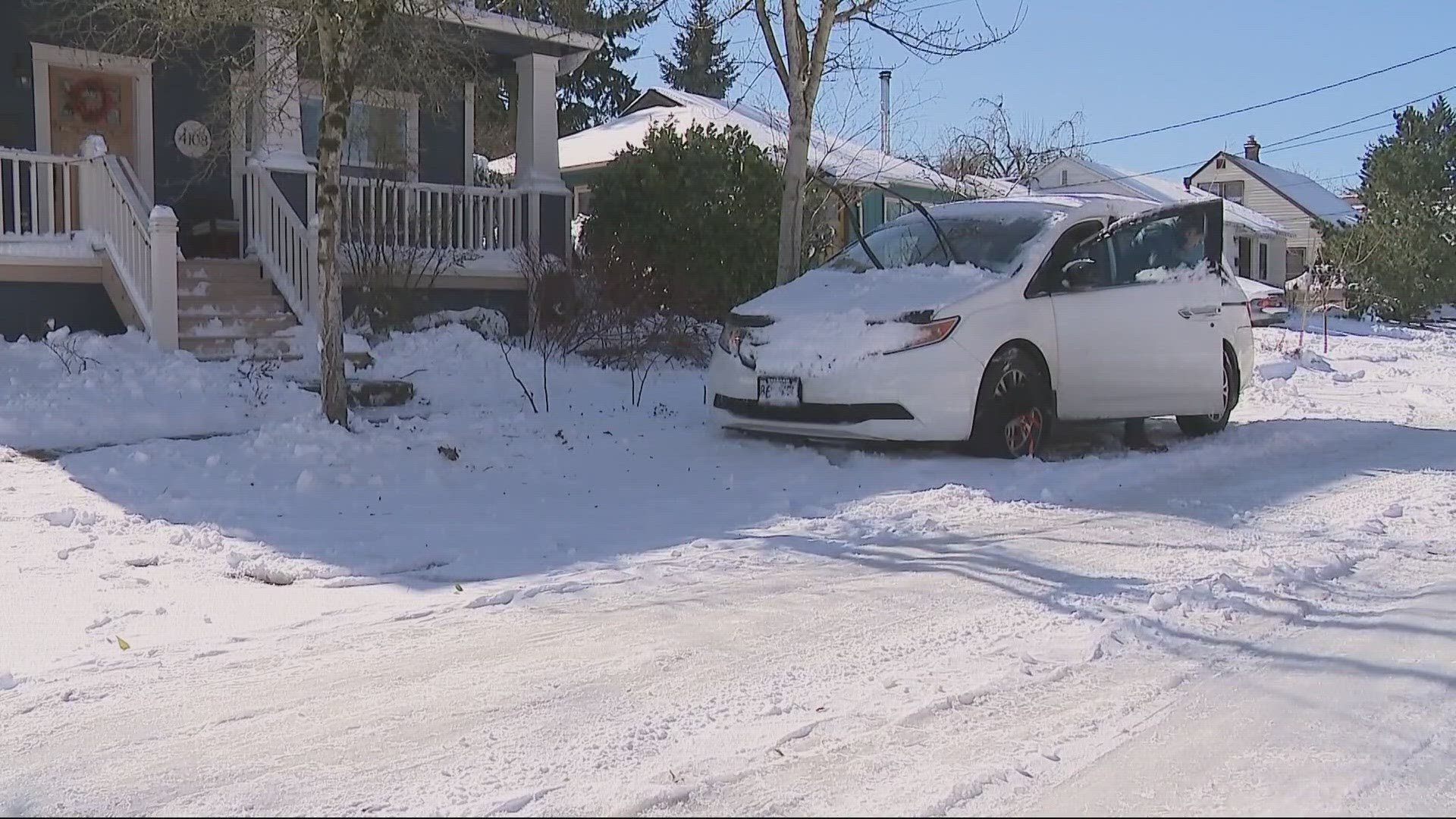PORTLAND, Oregon — Most of us don’t like driving when Portland roads become covered in snow or ice. To turn up the angst a little more this year, the Oregon Department of Transportation is warning of further cutbacks to winter service and road maintenance.
"We'll still be out there, but you might not see us as much. We're going to be plowing less, you might see more snow and ice on roads, and drivers should be prepared," said ODOT's Katherine Benenati.
Talking points for the agency cite reduced revenues from fuel taxes and higher operational costs, tied in part to inflation. KGW's The Story took a much deeper dive into the funding issue on Monday, which you can read in the link below.
While stressing preparedness, ODOT offered a crash course — pun intended — in winter driving techniques at a media event last week. So we took them up on the opportunity to glean a few useful tips, just in case you find yourself out on the roads when messy weather hits the metro area this winter.
"When you're up on a limit on traction, it doesn’t matter if you’re at 30 mph or 130 mph — the skids are the same,” said Todd Harris, an instructor at Pro Drive Racing School, as we sat through a required safety briefing. Next, we hopped into the skid car to take a few laps around their training circuit at Portland International Raceway.
Their skid car is an SUV seated on an outrigging with hydraulics that allows an instructor to remove weight — and therefore traction — from each wheel, simulating what happens to your car while driving on snow.
Harris' top points for winter driving: slow down, keep eyes focused up the road in order to anticipate rather than react to emergency situations, allow longer braking distances, and do all braking with your vehicle traveling straight before entering a corner.
If you do find yourself in a skid, Harris' advice is to "counter-steer and look in the direction you want the car to go, rather than the object you're trying to avoid."
"Front skids are the most common, by design," Harris said, driving around the practice course. His recommendation in that case is to apply some braking in order to move more weight onto your front tires.
In the less common rear skid, braking makes the situation worse because you're moving weight off the wheels that are already losing traction.
We used this advice while taking laps; however, these situations happen quickly and in sequence.
"Think of the gas and the brake as levers of where to move weight (and therefore traction)," Harris said.
KGW asked a few drivers what they do when it snows in Portland — "walk" or "stay home" were the most common responses, and probably the safest option on roads that won't be as well maintained this year.
I do the Driving Me Crazy feature as a generally — but not always — lighthearted take on things that drive people nuts on area roadways. Most of us can relate, and most of these topics are your ideas. What drives you crazy? Post your videos, photos and comments to my posts on Facebook , Twitter, and Instagram. If you're just anti-social, email me at cmcginness@kgw.com

